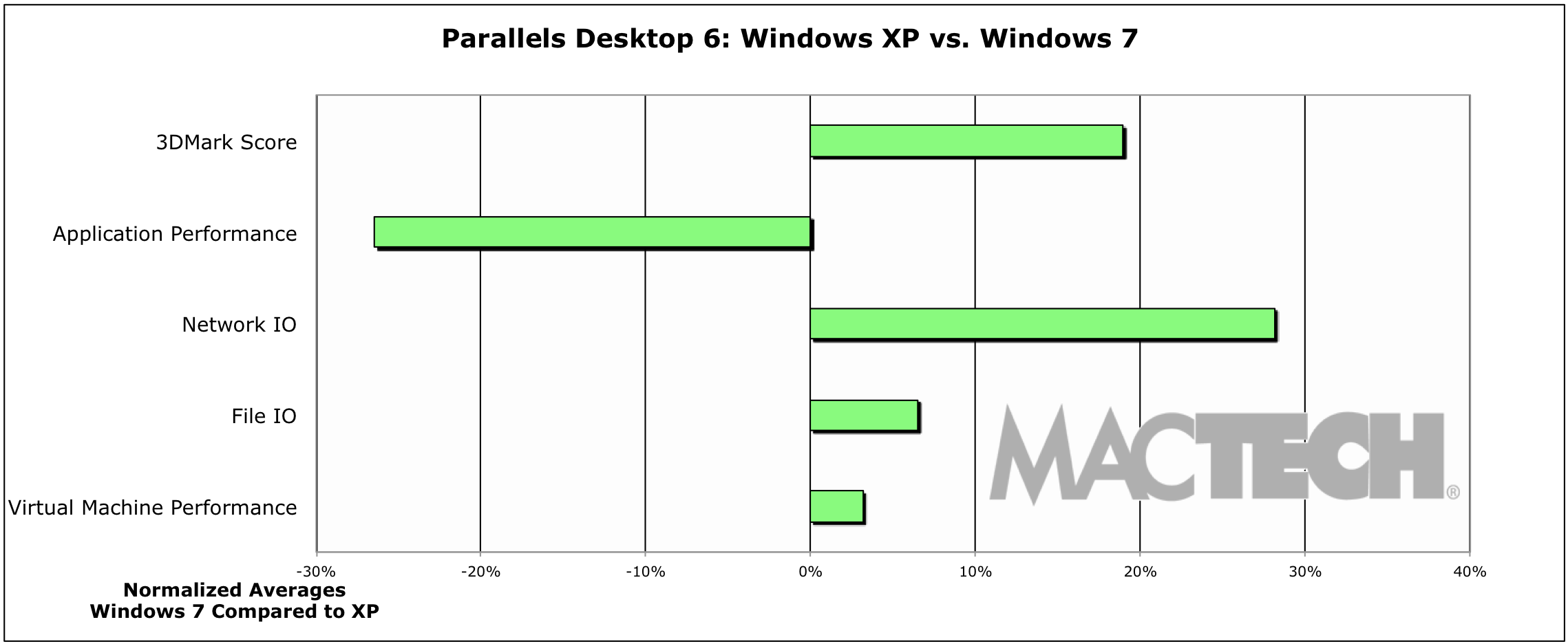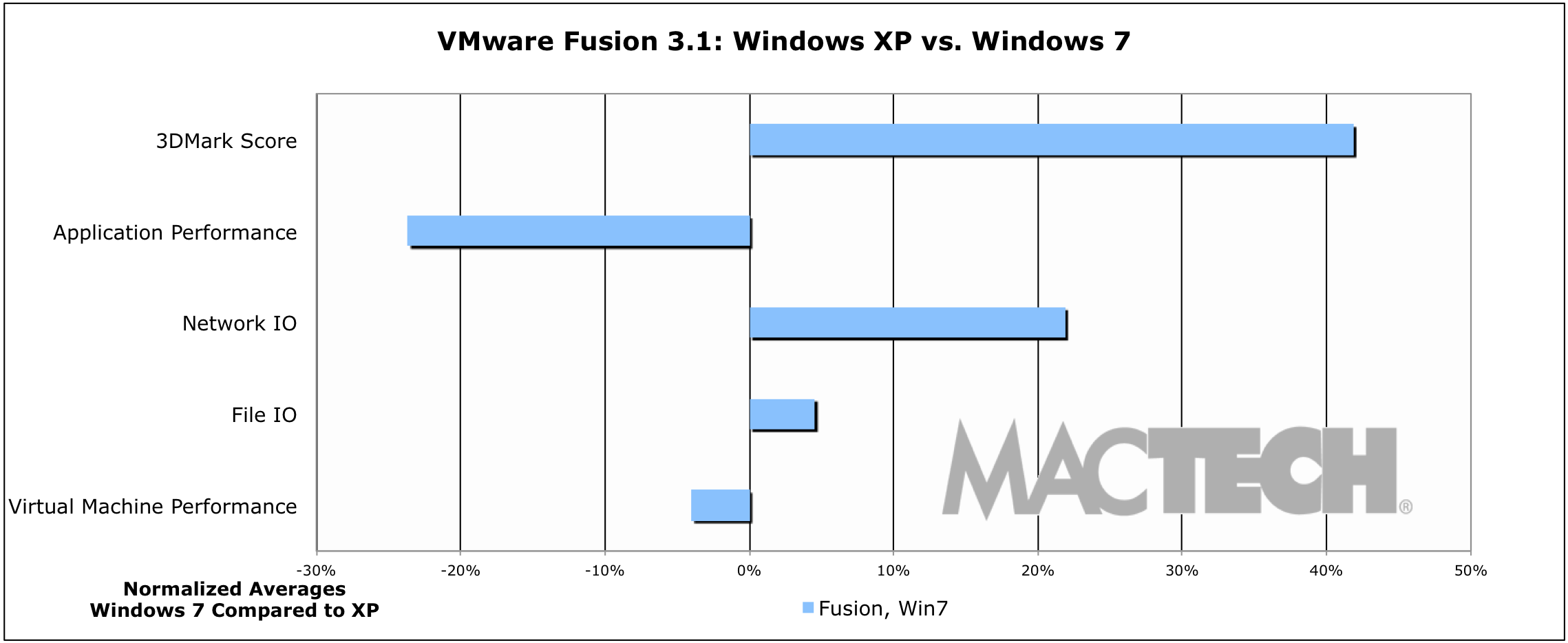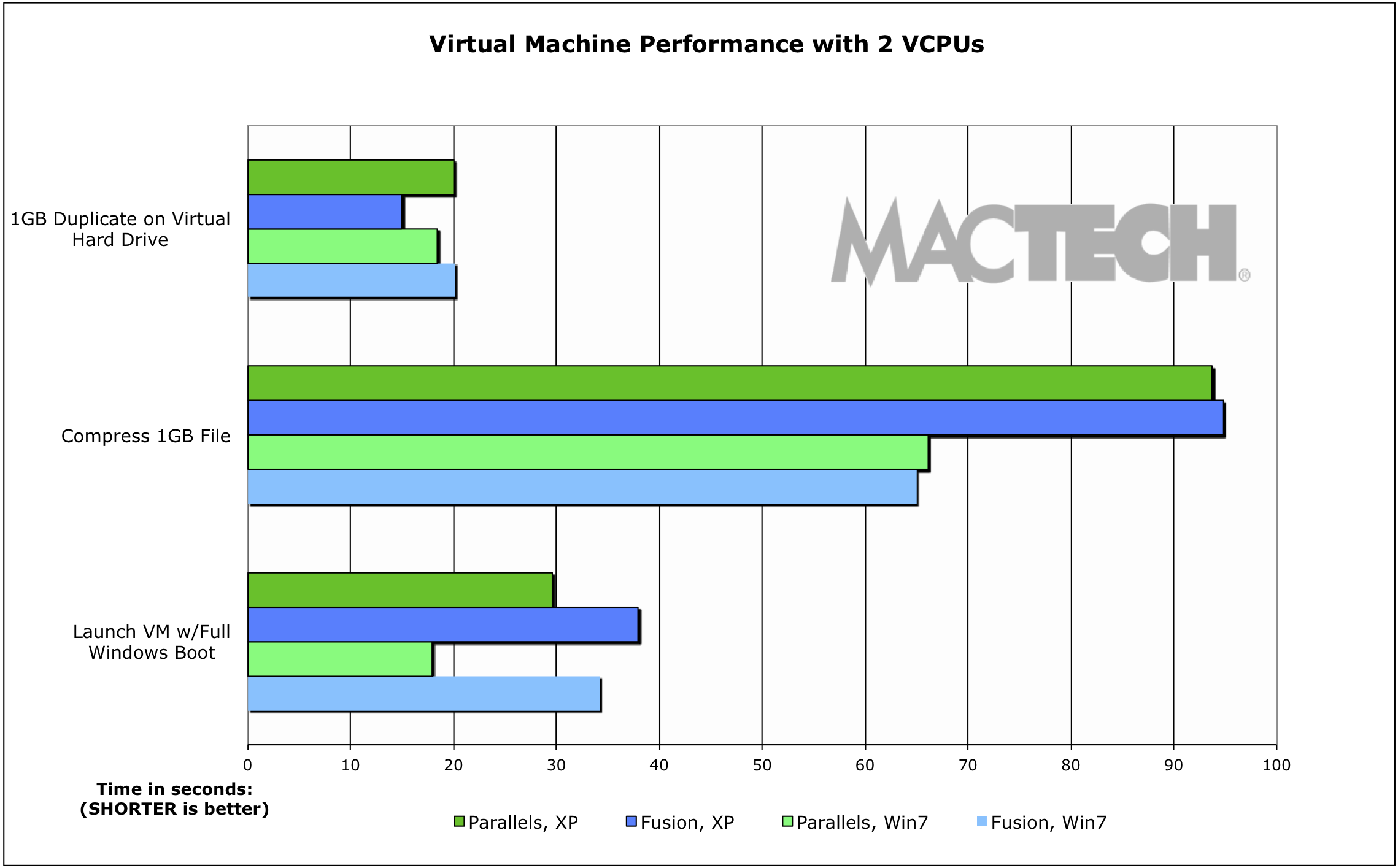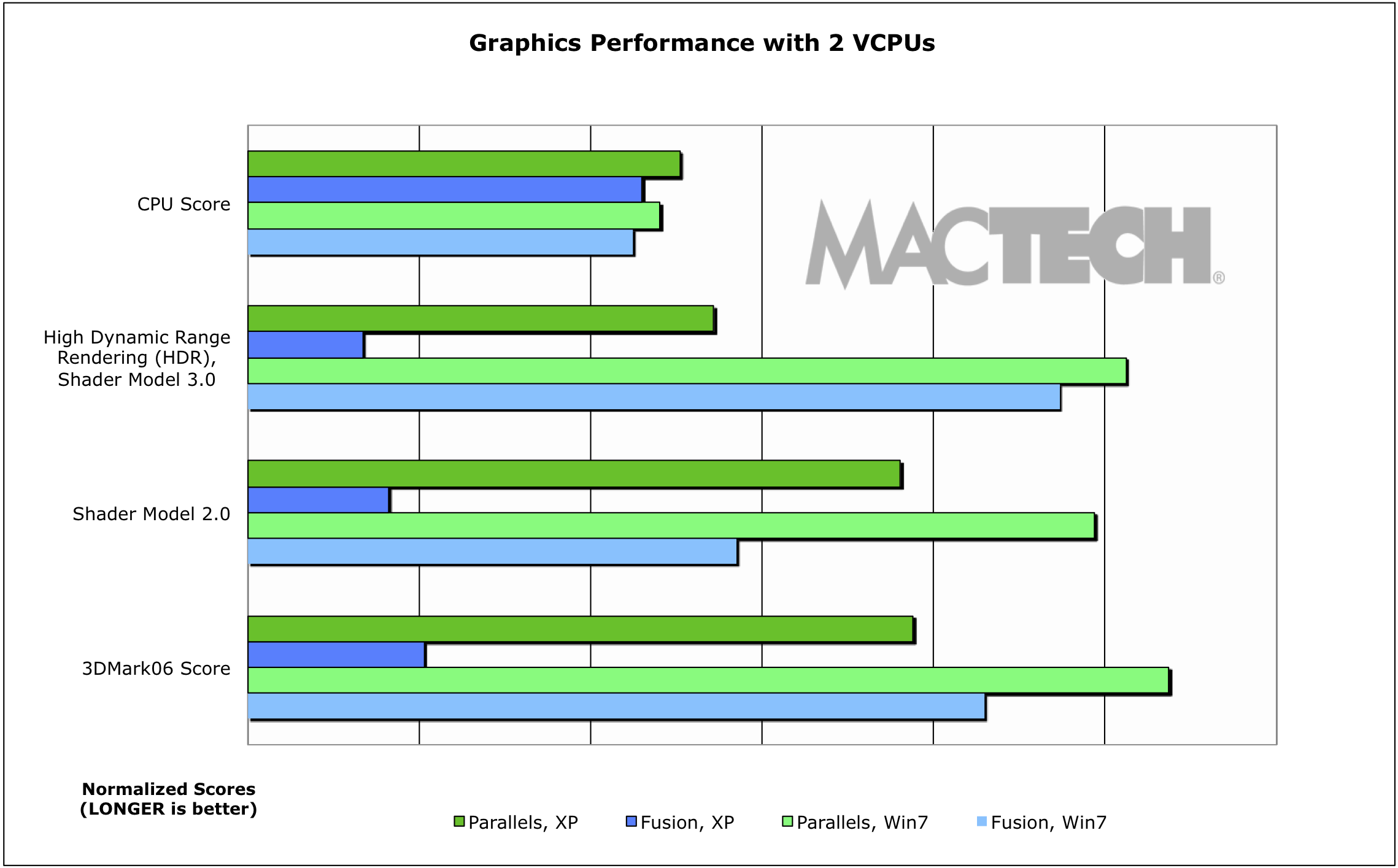Additional Conclusions
There are additional conclusions that we can extract from the results as well. Specifically, we looked at the differences between XP and Windows 7, as well as multiple virtual processors and using a Boot Camp volume.
XP vs. Windows 7
Right from the beginning, things just felt better running under Windows 7. Part of this is a more modern interface, but for the most part, things just felt snappier. I/O was faster, graphics worked better in both products, etc. The whole experience just made you want to run Windows 7 over Windows XP.

Parallels Desktop 6: Windows XP vs. Windows 7
We wanted to see what some of the benchmarks did, and normalized a number of scores so that we could compare them. With the exception of application performance, which was still quite good, Windows 7 helped things run better and faster for both Parallels Desktop and VMware Fusion.

VMware Fusion 3.1: Windows XP vs. Windows 7
In previous virtualization benchmarking projects, there were significant differences between running Microsoft XP vs. Vista, or XP vs. Windows 7. At this point, MacTech recommends that unless you have a driving reason to use XP (like application compatibility), you should move to Windows 7. Of course, no one should be using Windows Vista.
64-bit
There’s a big marketing push right now for 64-bit. We did not measure 32-bit specifically against 64-bit during these benchmarks, but we did use a 64-bit version of Windows 7. While most users still don’t need the additional address space that 64-bit brings, we no longer see any penalty to running 64-bit. As a result, especially if you are moving to Windows 7, you should probably move to the 64-bit version unless there’s some specific reason not to.
Multiple Virtual Processors
There’s a lot of "bragging rights" that encircle using multiple virtual processors under virtualization. In earlier versions of Windows, there were licensing issues that created artificial limitations. Today, especially with Windows 7, it’s different.
Depending on the test, and whether XP or 7, sometimes Parallels was faster, and other times VMware. The most significant difference was with the launch and a full Windows boot where Parallels was noticeably faster (shorter bars are better).

Virtual Machine Performance with 2 Virtual CPUs
In virtual machine performance with two virtual CPUs, we saw fairly predictable results. File duplication tests were split: VMware won under XP, and Parallels won under Win7. Compression tests were also split, but fairly close regardless. Launch virtual machine time, however, goes again to Parallels with noticeably faster full Windows boot times.
For graphics, similar to what we saw with a single virtual CPU, Parallels was faster across the board when using two virtual CPUs.

Graphics Performance with 2 Virtual CPUs
These days, the decision is fairly simple. If you have an application that can make use of multiple virtual processors, and this includes 3D Graphics, and your Mac has enough horsepower, then you should use them. Otherwise, it’s not necessary.
Then again, if speed is that important to you, you should be asking yourself about whether to run the app native on your Mac instead of in a virtual machine. Sometimes, like for CAD, you may not have an option.
Graphics performance with two virtual CPUs became even more pronounced, especially under Windows XP where Parallels Desktop was 3-4x faster than VMware Fusion. VMware Fusion scored considerably better on graphics tests under Windows 7. That said, Parallels Desktop continued to be faster there as well.
| Packed schedule. Learn from the best. Meet new people. Network with peers. One day semimar for techs and consultants who support home users, small office, and small to medium size business. Invest in yourself. Click here for more info. |
 |
